A transcriptional metastatic signature predicts survival in clear cell renal cell carcinoma
- PMID: 36180422
- PMCID: PMC9525645
- DOI: 10.1038/s41467-022-33375-w
A transcriptional metastatic signature predicts survival in clear cell renal cell carcinoma
Abstract
Clear cell renal cell carcinoma (ccRCC) is the most common type of kidney cancer in adults. When ccRCC is localized to the kidney, surgical resection or ablation of the tumor is often curative. However, in the metastatic setting, ccRCC remains a highly lethal disease. Here we use fresh patient samples that include treatment-naive primary tumor tissue, matched adjacent normal kidney tissue, as well as tumor samples collected from patients with bone metastases. Single-cell transcriptomic analysis of tumor cells from the primary tumors reveals a distinct transcriptional signature that is predictive of metastatic potential and patient survival. Analysis of supporting stromal cells within the tumor environment demonstrates vascular remodeling within the endothelial cells. An in silico cell-to-cell interaction analysis highlights the CXCL9/CXCL10-CXCR3 axis and the CD70-CD27 axis as potential therapeutic targets. Our findings provide biological insights into the interplay between tumor cells and the ccRCC microenvironment.
© 2022. The Author(s).
Conflict of interest statement
P.V.K. serves on the Scientific Advisory Board to Celsius Therapeutics Inc. and Biomage Inc. D.T.S. is a director and shareholder for Agios Therapeutics and Editas Medicines; a founder, director, shareholder, and scientific advisory board member for Magenta Therapeutics and LifeVault Bio, a shareholder and founder of Fate Therapeutics, and a director, founder, and shareholder for Clear Creek Bio, a consultant for FOG Pharma and VCanBio, and a recipient of sponsored research funding from Novartis. D.B.S. is a founder, consultant, and shareholder for Clear Creek Bio. The remaining authors declare no competing interests.
Figures
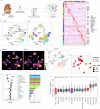
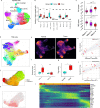
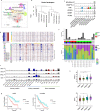
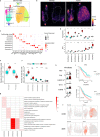
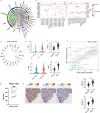
References
Publication types
MeSH terms
Grants and funding
LinkOut - more resources
Full Text Sources
Medical
Molecular Biology Databases
Research Materials

